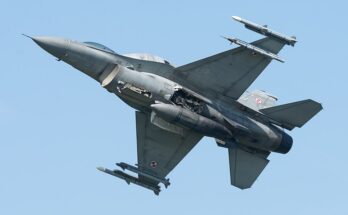by Dan Darling, International Military Markets Analyst, Forecast International.
With worries about Russia percolating, Sweden’s center-left coalition government – in agreement with three of the four parties in the opposition Alliance coalition – has opted to raise the country’s defense spending by SEK10.2 billion ($1.18 billion) over the five-year period between 2016 and 2020. Upon coming to power in October 2014, the left-leaning minority government of Prime Minister Stefan Lofven had proposed a military allocation totaling SEK4.16 billion ($480 million) over a four-year period beginning in 2015
But according to the recommendations of the Swedish armed forces, the additional funding – while welcomed – fell short by 65 percent of the requirements assigned to the military by the Swedish Parliament’s Defense Committee. After a prolonged defense spending diet begun in 1999, the Swedish armed forces found themselves smaller in number and lacking in presence on the strategic Baltic island of Gotland at a time when an increasingly emboldened and aggressive Russia was allegedly penetrating the Stockholm Archipelago with its submarines. On top of this, two major defense programs – one involving the development and production of a next-generation Gripen combat aircraft (Gripen E), and the other covering procurement of two new-generation submarines – are on tap and expected to absorb a large chunk of force modernization funding in the near and medium terms.
Recognizing the budgetary and operational pressures being placed on the armed forces, the Lofven government announced a five-year defense spending increase of SEK6.2 billion ($716 million) on March 12. That draft allocation, however, came under criticism from the opposition Alliance coalition for being too small. The charge, leveled the minority government, was an interesting one coming from the Alliance, which itself had hardly earned any gravitas from the military establishment during its eight-year run atop the government prior to the September 2014 elections.
Still, due to the fragile makeup of the Lofven government – which relies on a tacit agreement with the four-party centrist Alliance bloc to enable the minority coalition to functionally govern through the 2018 general election – the charge carried weight. Thus, on April 17 – following 10 tense days of negotiation – a compromise was hammered out with the Alliance bloc that calls for the larger SEK10.2 billion figure.
While a victory of sorts for governing stability and compromise, the funding – while crucial – is not nearly enough for neutral Sweden to conduct the necessary air-sea surveillance and response duties required of the armed forces, not to mention dealing with threats such as cyber attacks, or conducting out-of-area peacekeeping as part of EU- or UN-led missions. Sweden’s Supreme Commander of the Armed Forces, Army Gen. Sverker Goransson, said the funding needed to meet the basic requirements outlined by the cross-party Defense Committee, the Försvarsberedningen, would amount to an additional SEK3 billion annually (SEK15 billion, or $1.73 billion, over 2016-2020).
The new defense deal agreed to by five of the country’s six most powerful political parties is no doubt a good first step toward rectifying past neglect of the armed forces. In addition, Sweden’s armed forces would be unique among the world’s armies if they were not requesting more funding than what their government is willing to provide.
But as far as patching the holes of the Swedish military and returning it to its previous foundational basis – as a regional fighting force to be reckoned with – the step taken by the Lofven government in tandem with the Alliance bloc is more symbolic than substantial.
In the meantime, closer defense cooperation with Nordic partners such as Finland and Denmark provides an opportunity to maximize capabilities and plug holes where weaknesses exist. With the government disinclined to join the NATO Alliance, working with these natural allies is now a necessity – not a choice.
For 50 years, Forecast International intelligence reports have been the aerospace and defense industry standard for accurate research, analysis, and projections. Our experienced analysts compile, evaluate, and present accurate data for decision makers. FI's market research reports offer concise analysis of individual programs and identify market opportunities. Each report includes a program overview, detailed statistics, recent developments and a competitive analysis, culminating in production forecasts spanning 10 or 15 years. Let our market intelligence reports be a key part of reducing uncertainties and mastering your specific market and its growth potential. Find out more at www.forecastinternational.com



